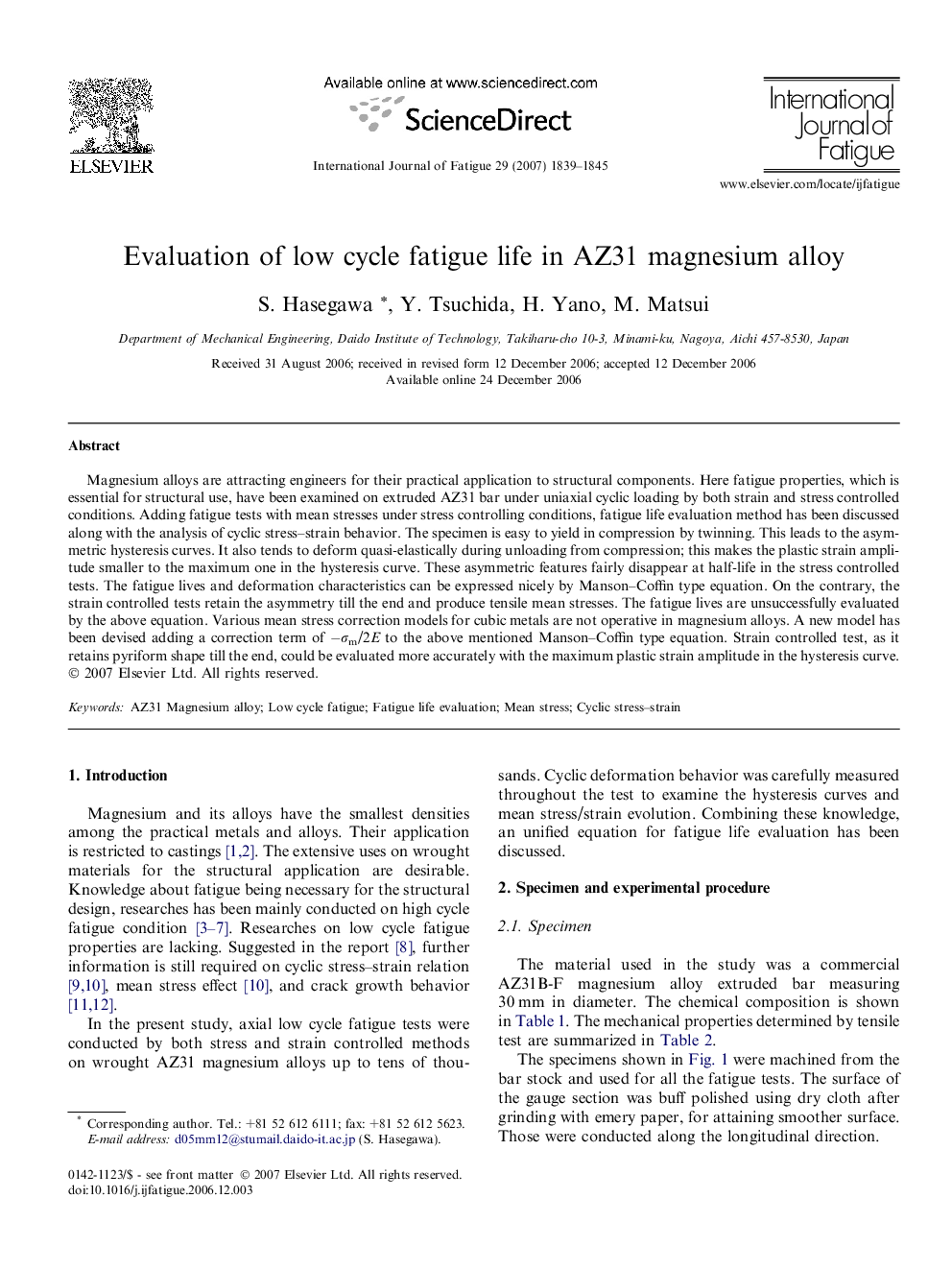| Article ID | Journal | Published Year | Pages | File Type |
|---|---|---|---|---|
| 777238 | International Journal of Fatigue | 2007 | 7 Pages |
Magnesium alloys are attracting engineers for their practical application to structural components. Here fatigue properties, which is essential for structural use, have been examined on extruded AZ31 bar under uniaxial cyclic loading by both strain and stress controlled conditions. Adding fatigue tests with mean stresses under stress controlling conditions, fatigue life evaluation method has been discussed along with the analysis of cyclic stress–strain behavior. The specimen is easy to yield in compression by twinning. This leads to the asymmetric hysteresis curves. It also tends to deform quasi-elastically during unloading from compression; this makes the plastic strain amplitude smaller to the maximum one in the hysteresis curve. These asymmetric features fairly disappear at half-life in the stress controlled tests. The fatigue lives and deformation characteristics can be expressed nicely by Manson–Coffin type equation. On the contrary, the strain controlled tests retain the asymmetry till the end and produce tensile mean stresses. The fatigue lives are unsuccessfully evaluated by the above equation. Various mean stress correction models for cubic metals are not operative in magnesium alloys. A new model has been devised adding a correction term of −σm/2E to the above mentioned Manson–Coffin type equation. Strain controlled test, as it retains pyriform shape till the end, could be evaluated more accurately with the maximum plastic strain amplitude in the hysteresis curve.
